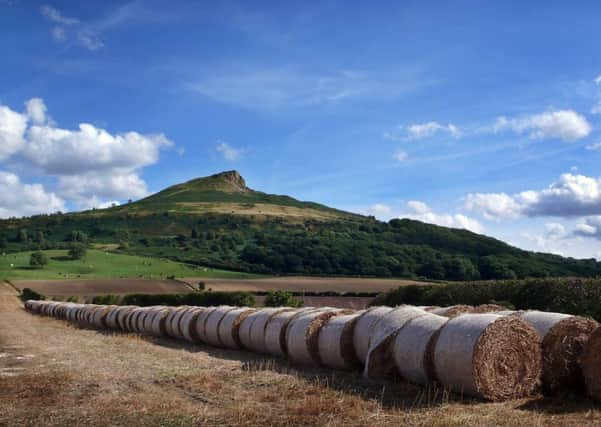Natural beauty


When Simon Jenkins set out to pinpoint the 100 best views in England, had he asked for possible suggestions from anyone who has spent any time in Yorkshire he would have been inundated.
For some it’s the view high in the Yorkshire Dales across Buttertubs Pass; for others it’s the coastal panoramas of a Robin Hood’s Bay. Regardless, most would have told Jenkins to set aside at least a few weeks to explore the four corners of the county and its biggest advocates might have said he needn’t bother going anywhere else.
Advertisement
Hide AdAdvertisement
Hide AdWhile Jenkins did venture to lose himself in the Lake District and the Derbyshire Peak District, Yorkshire did prove something of a draw and accounts for 10 of the 100 views. There will inevitably disagreement about his final selection, but the newspaper columnist who has been chair of the National Trust for the last five years is unrepentant. While he admits the list is not definitive – you get the feeling that he could easily have selected 200 or 300 views – he rejects the idea that it is also highly subjective.


“If visual beauty were purely subjective, conversation about art would cease and custodianship and conservation would have no basis,” he says. “We have to find agreement on what is lovely in our surroundings if we are to know what we are trying to protect.”
It wasn’t always this way. A few hundred years ago, England’s green and pleasant lands weren’t something most found fit to either cherish or celebrate. They were simply there.
“The idea of appreciating our landscapes came late to England. It was imported largely as a result of the Grand Tour an experience which really informed the management of country estates,” says Jenkins. “Soon men like Capability Brown and later Humphry Repton found themselves in much demand. During the 18th-century they prevailed upon their clients to move thousands of tons of earth, to upheave villages and plant forests. The course of a footpath, the lie of a slope, the curve of a lake became matters of obsessive attention.”
Advertisement
Hide AdAdvertisement
Hide AdBy way of evidence, he points to the 12th-century Rievaulx Abbey which did make it into the top 100.
“Really the best view of the ruins is from the valley floor, but it was the prospect over them which appealed to the Georgians. The owner of the Helmsley estate, Thomas Duncombe, decided in 1758 to lay out a serpentine terrace to capture the scene. His guests would drive out from Duncombe Park after dinner to admire the views which had been carefully crafted to be seen through the trees. These trees have since swamped the terrace but the National Trust does ensure that the 13 keyhole views are kept open.”
Jenkins’ journey through Yorkshire led him from the former mill towns of West Yorkshire through to more wild and remote spots in the north of the county. Some of his choices would have made it onto most people’s list. It’s hard to disagree with his inclusion of Roseberry Topping, which he describes as a “cone which someone has taken a swipe at” and the fields and barns of Swaledale “a surreal pattern of shapes with seemingly no rhyme or reason”.
Sometimes it’s the landscape alone which warrants a particular view’s inclusion. Sometimes, like at Bempton Cliffs, it’s because of the wildlife it attracts.
Advertisement
Hide AdAdvertisement
Hide Ad“Yorkshire’s east coast is a living moving shoreline which seems to be in perpetual combat with the sea and like much of England’s north east coast, the chief attraction of Bempton is ornithological. When I was there was great excitement about the arrival of a pair of short-eared owls. The view south stops short of Flamborough at North Cliff – it’s roughly half the height of Bempton and creates the optical illusion of seeming further away. The lack of trees or any human settlement gives this coast what I’d describe a noble wildness. It’s a place for birds, a place where humans seem to be intruders.”
On Jenkins’ journey he was occasionally confronted by scenes carved out by nature, which were just too good to ignore. Among them was Gordale Scar, the dramatic limestone ravine at Malham.
“As you approach it there’s a small notice, but it’s not a map or explanation. Instead it reproduces James Ward’s painting of Gordale Scar which is held at Tate Britain. That’s tourist information with class. Ward’s painting is often dismissed as romantic exaggeration. I disagree. As you walk into the gorge, the gloom is all enveloping. Vast limestone shapes stare out of the darkness, it really is nature at its most theatrical.”
However, the 100 best views also include those shaped by man and Jenkins admits it forced him to question how we will view current developments in a century or two’s time.
Advertisement
Hide AdAdvertisement
Hide Ad“The viaduct is a beautiful thing, fusing visually with the contours of the surrounding hills,” he says of his decision to include Ribblehead. “I’m often asked why, if old viaducts and bridges can add to a landscape, later intruders such as wind turbines and power stations should detract from it. The answer, I think, lies partly in materials. Ribblehead was built from the stone on which it sits, like the walls of fields and farms. Waving, white turbines are far more prominently sited, drawing the eye from every point. There is no comparison.”
England’s 100 Best Views by Simon Jenkins is published by Profile Books priced £25. To order through the Yorkshire Post Bookshop call 01748 821122.
County’s top spots
Simon Jenkins’ top 10 Yorkshire views:
Gordale Scar
Bempton Cliffs
Hebden Bridge
Saltaire
Whitby harbour
Swaledale
Roseberry Topping
Richmond narket place
Ribblehead
Rievaulx Abbey